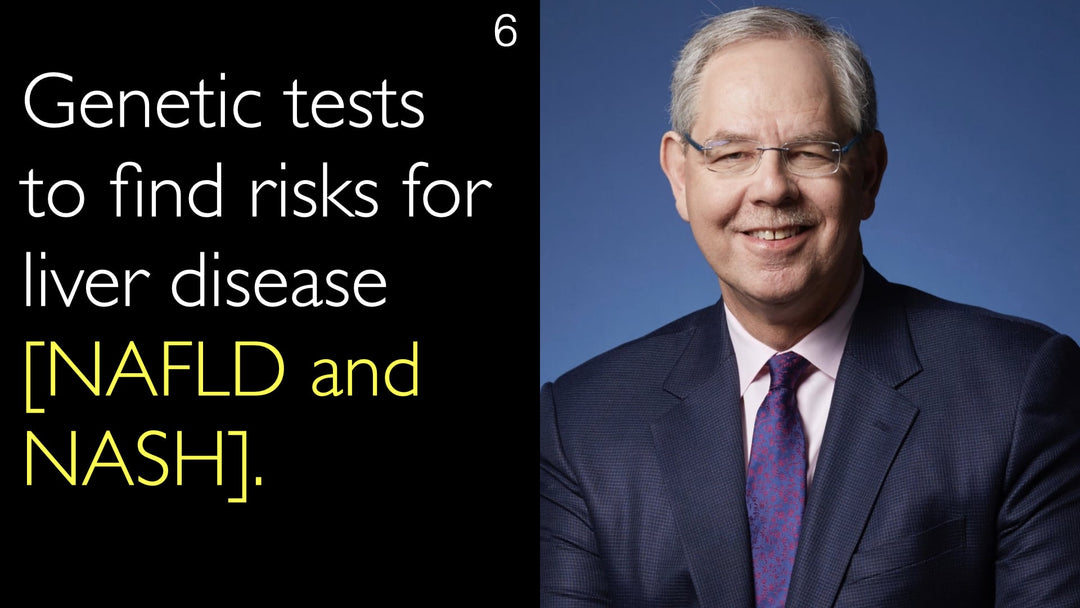Leading expert in cervical cancer prevention, Dr. Jack Cuzick, MD, explains how the human papillomavirus (HPV) is the primary cause of cervical cancer and details the two major advancements revolutionizing its prevention: highly sensitive HPV DNA testing for screening and prophylactic HPV vaccination. He describes the transition from traditional Pap smears to more accurate, automated molecular tests and outlines the efficacy of available vaccines, which are nearly 100% effective at preventing infection from the high-risk HPV types they target. With these tools, Dr. Cuzick, MD, states that cervical cancer is on the verge of being eradicated, potentially disappearing within the next decade.
HPV Prevention and Screening: The Path to Eradicating Cervical Cancer
Jump To Section
- HPV as the Primary Cause of Cervical Cancer
- Advantages of HPV DNA Testing Over Pap Smears
- HPV Vaccines for Primary Prevention
- Vaccine Efficacy and Available Types
- The Continued Role of Screening
- The Future of Cervical Cancer Incidence
HPV as the Primary Cause of Cervical Cancer
Cervical cancer is unique among major cancers because it has one primary cause. Dr. Jack Cuzick, MD, confirms that the human papillomavirus (HPV) is responsible for virtually all cases. This sexually transmitted virus was discovered by Dr. Harald zur Hausen, who received the Nobel Prize for his work. This foundational discovery has enabled the development of highly effective prevention strategies that are now making the eradication of this disease a realistic goal.
Advantages of HPV DNA Testing Over Pap Smears
The latest development in cervical cancer screening is the HPV DNA test, which is replacing the conventional Pap smear as the primary screening method. Dr. Jack Cuzick, MD, explains that this test uses the same cervical cell sample but is far more sensitive for detecting cancer precursors. As a completely objective, automated molecular test, it eliminates the variability and fatigue associated with manually examining slides under a microscope. This automation allows for more reliable, scalable, and efficient population-wide screening programs.
HPV Vaccines for Primary Prevention
Perhaps the most exciting development in the last decade is the HPV vaccine. Dr. Cuzick, MD, describes it as a powerful tool for primary prevention. These prophylactic vaccines are designed to be administered before any exposure to the virus occurs. They train the immune system to recognize and fight off future HPV infections, thereby preventing the initial event that can lead to cervical cancer. Dr. Anton Titov, MD, highlights the importance of this preventative approach during the interview.
Vaccine Efficacy and Available Types
There are three commercially available HPV vaccines, each offering robust protection. Dr. Jack Cuzick, MD, outlines the differences: the bivalent vaccine (Cervarix) protects against the two most common cancer-causing types, HPV 16 and 18. The quadrivalent vaccine also protects against HPV 16 and 18, plus types 6 and 11, which cause genital warts. Most recently, a 9-valent vaccine has been developed. This vaccine targets the original four types plus five additional high-risk HPV types, offering the potential to prevent up to 90% of cervical cancers. All vaccines have been shown to be nearly 100% effective at preventing infection from the HPV types they cover.
The Continued Role of Screening
It is critical to understand that HPV vaccination does not replace the need for screening. Dr. Jack Cuzick, MD, emphasizes that the vaccines are prophylactic, not therapeutic. They cannot eliminate an existing HPV infection. Therefore, women who have been vaccinated must still participate in regular cervical screening. The highly sensitive HPV DNA test is particularly valuable here, as it can accurately detect any persistent high-risk HPV infections that could lead to disease, even in vaccinated populations.
The Future of Cervical Cancer Incidence
The combination of widespread HPV vaccination and advanced HPV DNA screening creates a powerful synergy. Dr. Cuzick, MD, is optimistic that this dual approach will lead to a dramatic reduction in cervical cancer cases. He states that the disease is on the verge of being eradicated. With the continued rollout of the 9-valent vaccine and the global adoption of primary HPV testing, Dr. Jack Cuzick, MD, believes cervical cancer could almost disappear within the next 5 to 10 years, transforming a once-common cancer into a rare disease.
Full Transcript
Dr. Anton Titov, MD: Cervical cancer affects young women. There was a famous TV personality in the UK, Jade Goody, who died from cervical cancer at 27 years of age.
Dr. Anton Titov, MD: You've done seminal work on cervical cancer prevention. What are the latest developments in prevention of cervical cancer? How can a woman prevent cervical cancer?
Dr. Jack Cuzick, MD: Cervical cancer is unique amongst the major cancers. There is one cause for virtually all cervical cancers: the human papillomavirus, or HPV. HPV is a sexually transmitted virus.
Dr. Jack Cuzick, MD: Dr. Harald zur Hausen received the Nobel Prize for his discovery of this particular cause of cervical cancer. There has been an enormous amount of work on how to convert that initial observation into clinical benefit.
Dr. Jack Cuzick, MD: Cervical cancer was once the most common cancer in women, but now it is on the verge of being eradicated. Screening tests for cervical cancer have been developed.
Dr. Jack Cuzick, MD: New diagnostic tests for HPV are better than the conventional Pap smear. These diagnostic tests look for the human papillomavirus in the same cervical sample—the same sample of cervical cells that we take for a Pap smear.
Dr. Jack Cuzick, MD: It is much more sensitive than cytology for cancer detection. We are now replacing cytology as the primary screening test for cervical cancer.
Dr. Jack Cuzick, MD: HPV DNA detection is an automated test that can be scaled. This is opposed to the risks of a physician being tired or inattentive during manual testing. There are many advantages to HPV testing.
Dr. Jack Cuzick, MD: The HPV test is more sensitive than the Papanicolaou test. It is a completely objective, automated molecular test that doesn't require hours of looking down a microscope to find abnormal cancer cells. It comes directly out of a machine.
Dr. Jack Cuzick, MD: The more exciting new development began about 10 years ago: a vaccine against the HPV virus. Many clinical trials have looked at HPV vaccination.
Dr. Jack Cuzick, MD: There are essentially three commercially available HPV vaccines now. One by GlaxoSmithKline is called Cervarix; it protects against two major HPV types causing cancer: HPV type 16 and HPV type 18.
Dr. Jack Cuzick, MD: Merck developed a vaccine that initially included those two types, plus two types that cause genital warts: HPV type 6 and type 11. Both vaccines have been shown to be virtually 100% effective at preventing HPV infection.
Dr. Jack Cuzick, MD: HPV vaccines have to be given before infection occurs. Neither of them are therapeutic; if you are already infected with HPV, the vaccine doesn't have any impact on eliminating the virus. HPV infection still requires screening to detect abnormal cancer cells.
Dr. Jack Cuzick, MD: Merck has also developed a wider-spectrum vaccine that includes 9 HPV types: the original four plus the next five most common types that cause cervical cancer. Two types are included to prevent genital warts and infections, and another seven aim to prevent cervical cancer.
Dr. Jack Cuzick, MD: We hope for a potentially 90% reduction in cervical cancer incidence. The ability of the HPV DNA test to diagnose cervical pre-cancers at an early stage existed even before the vaccine was available.
Dr. Jack Cuzick, MD: Potentially, cervical cancer could almost disappear over the next 5 to 10 years.







